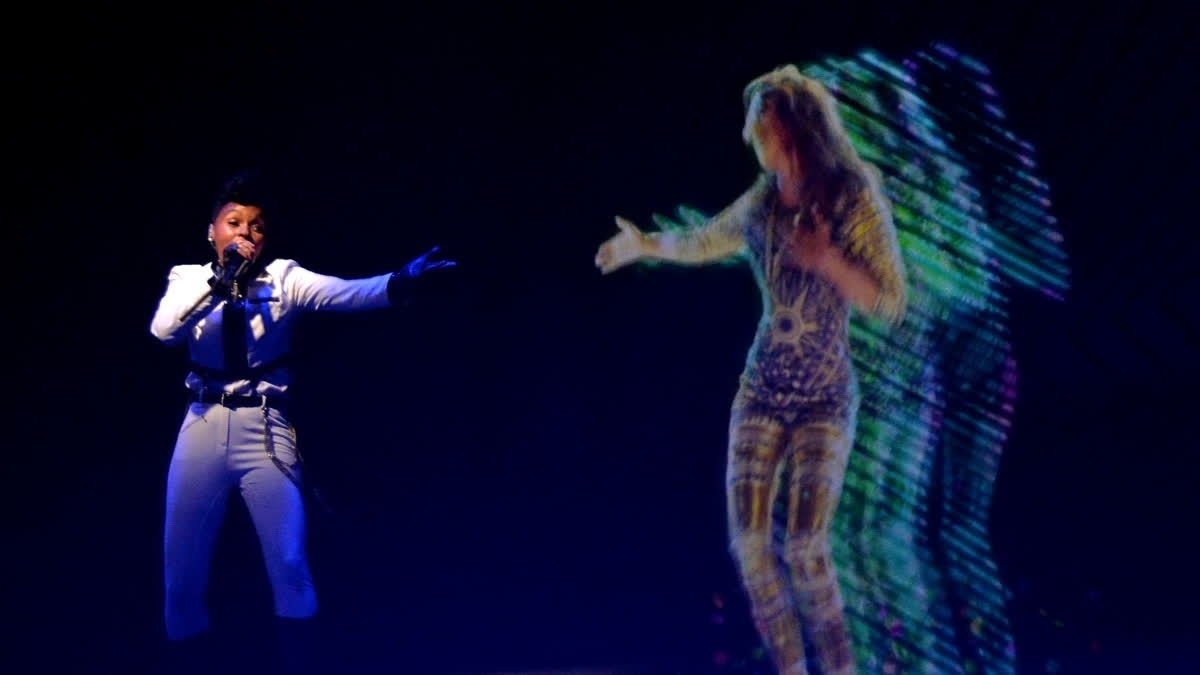Tupac To Sidhu Moosewala, Hologram Concerts Are Where Popular Past Stars Are Born Again
Total Views |

Imagine you're standing in a stadium in Mumbai, and there on stage is Sidhu Moosewala (who passed away in 2022) rapping every word, moving to every beat. Not in flesh, but in ghostly, high-def realism. That’s the promise of “Signed to God: The Hologram Experience,” a groundbreaking 2026 world tour announced via Moosewala’s official Instagram by his family and promoters. It marks the first posthumous global concert by an Indian artist. India hosted its first 3D hologram concert in Mumbai, back in June 2024 (titled “Those Who Know They Know”) produced by the events firm Emergence.
It was a key step toward proving India’s openness to experience such technology and setting the groundwork for Sidhu’s tour.
Sidhu wasn’t just another Punjabi singer. His lyrics spoke truth to power, rural pride, generational grit. Since his tragic assassination in 2022, the horror of loss was replaced by a swelling wave of legacy. Now, technology gives fans a chance to see him perform once more: 3D hologram projections, AI synchronization of his original vocals, cinematic visuals and stagecraft unite to recreate Sidhu’s presence on stage... not as a memory, but as lived experience. Though exact dates and venues remain under wraps, excitement is global among his fan base from Punjab to Toronto, London to LA.
The mere announcement has sparked viral fervour and speculation about what will unfold next.
A Brief History of Hologram Concerts
The journey began almost two decades ago... not with lasers, but with smoke and mirrors. The big breakthrough came in 2012 at Coachella, when Snoop Dogg and Dr. Dre summoned trailblazing rapper Tupac Shakur (decades after his death) via a still image projection trick. The result was eerie, emotional, impossible to forget: Tupac performing Hail Mary and 2 of Amerikaz Most Wanted as if resurrected from thin air. The technology’s clever misnomer “hologram” rested on a refined version of the 19th-century Pepper’s Ghost illusion.
The technique involved digital animation projected onto angled glass or Mylar screens, with precise lighting and stagecraft to create a floating, three-dimensional effect. It looked real (emotionally raw, and haunting) and it left audiences stunned into silence, then awe. That show inspired a cascade of similar events: Whitney Houston, Elvis Presley, Michael Jackson, Roy Orbison, Frank Zappa and others have all “performed” posthumously via hologram tours. ABBA even launched an entire residency in London using avatars dubbed “ABBAtars”.
How It Works
Although billed as holograms, most concerts use optical illusions (namely Pepper’s Ghost) driven by cameras, projectors, reflective films, and software that reimagines performances in real time. Motion capture from original footage or actors helps build realistic movements and lip-sync, then lighting and audio design sell the illusion that the artist is there, alive, on stage with you. Production costs can run into the hundreds of thousands (sometimes up to $400K per show), depending on scale and locale.
Why Fans Love It
For fans, hologram concerts are resurrection theatre: the chance to see their lost heroes again, to sing along, to feel connected. After the Coachella Tupac show, streaming numbers surged, album sales rose, social media buzz exploded.
Yet not everyone is thrilled. Critics warn of uncanny valley perversity, commodifying the dead, turning grief into spectacle. Some heirs and estates balk at virtual avatars. Prince once decried the entire idea as “demonic.” Others argue it reduces human artistry to hollow imitation. They raise questions about mortality, legacy, artistry... and about what it means when “being there” no longer requires a body.

